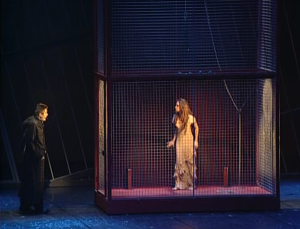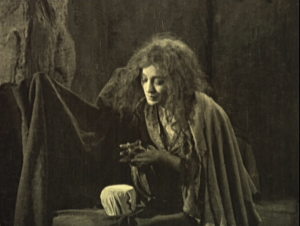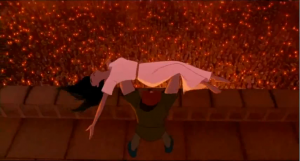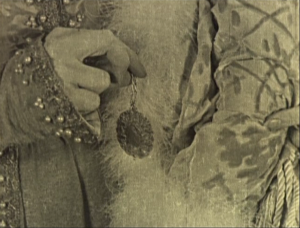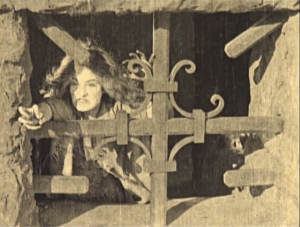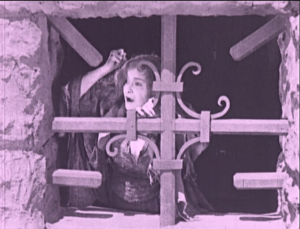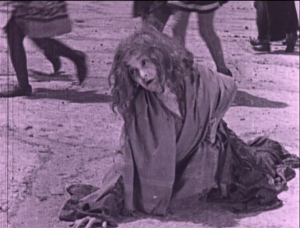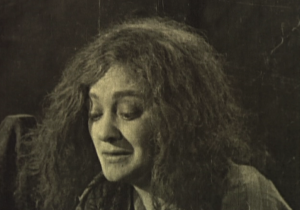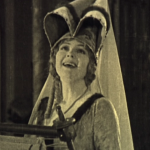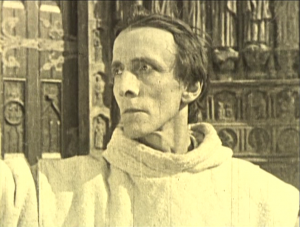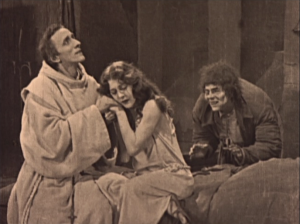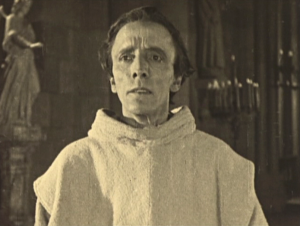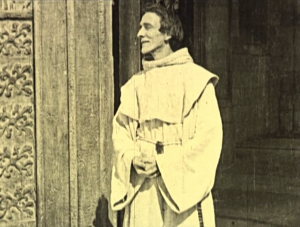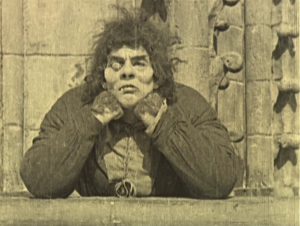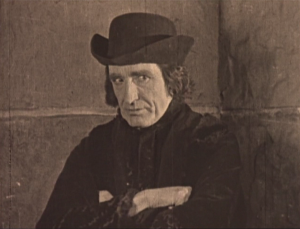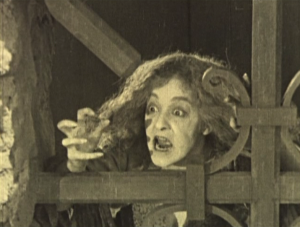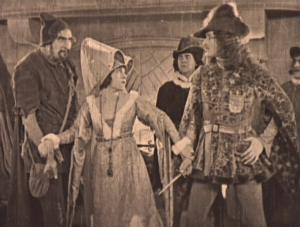Book 8, Chapter 4, Lasciate Ogni Speranza
This is my favorite chapter in the whole book. This is where Frollo confesses his twisted love to Esmeralda and she rejects him. Pretty much everything so far as boiled down to this chapter. It just such a rich quotable monologue for Frollo and I do like how Esmeralda doesn’t pity him and doesn’t except his “love.”
I love quote, “tis madness to halt midway in the monstrous,” My version of the hunchback is a slight variation of this but I still remember this wording from the first time I read the book.
So things of interest, Esmeralda was in that cell for a while, in fact in book 8 chapter 6, it says that her execution is in May but the crime was in March, so pending on the trial this makes her jail time at least a good month.
Also Frollo clearly says that she wore blue when he first saw her dancing. To my knowledge, black and white versions aside, Esmeralda has only been depicted in blue once in a movie. And you know what that version was, freaking Secret of the Hunchback! She also wore a little teal accent in the Disney but it was mostly purple which is better than red. Oh, wait, she wore blue in the 1982 version in the first half, then again 1982 Esmeralda is timid and hates dancing so not a strong character depiction there.
I don’t mean to harp on the color of Esmeralda’s costumes, after all I wrote a long post on the matter two years ago, which you can read here, but it’s right there filmmakers. Then agin, filmmakers tends to gloss over this scene which makes me sad.
No film version has ever given this scene the depiction I think it deserve, some come close but of the versions I have seen, I think Notre Dame de Paris
is best.
The opera La Esmeralda does this scene well but libertto was written but Hugo himself and it hasn’t performed as an full opera since like 1836, people didn’t like it. I also know Der Glockner von Notre Dame had this scene in it but I have seen it and I can’t recall the script that I read ages ago.
I hope there is some adaptation someday that will do this scene right because it would be amazing.
Book 8, Chapter 5, The Mother
This is another Sister Gudule focus chapter. It’s her lamenting her daughter and learning of Esmeralda’s impending death, which makes her happy.
Now this chapter may seem trivial but it’s not. In this chapter she asks god to let her see her daughter if only for a moment. It’s a case of be careful of word choice. The larger implications of this chapter will come up later.
It’s really a shame only like two versions have touched on Gudule and one didn’t handle it well at all (the 1923 version) and they one is really, really badly done (the dingo version).
Book 8, Chapter 6, Three Men’s Hearts, Differently Constituted
This chapter is the big one for many of a film, Esmeralda execution and recuse by Quasimodo. What we really see in this chapter is Phoebus, Frollo, and Quasimodo’s true feeling about Esmeralda as indicated by the title.
Phoebus is done with her and believes she bewitched him, his stance is I don’t care. Frollo cares but he would rather have her die if she won’t be his alone, his is selfish lust. Quasimodo saves her for no other reason than he doesn’t want her to die, his unselfish love.
This is an epic scene, no question, especially at the end. Although Quasimodo never swings down from Notre Dame and recuse Esmeralda from giblet only to swing back up on to Notre Dame.
Instead he climbs down while Esmeralda is in front of Notre Dame and grabs her and run into the cathedral. Some version opt for the impossible feat of swinging down off the church and swinging back, makes it more epic for a film. These version include the Disney version, the 1939, the 1986 and the 1997. The 1923 and the 1956 do the drop down in front of Notre Dame and run in. The 1982 is a mixture, as Quasimodo swings down but runs into Notre Dame. And the 1977 version has Quasimodo walk up to the pillory, save her and runs back.
The scene ends with Quasimodo declaring sanctuary for Esmeralda and showing off his rescues to the happy crowd. Many versions do this, some don’t which is a little weird. Or in the case of the 1956 version, they should have either cut it or not have had that awkward fade. Because it really shoehorned in.
Follow thehunchblog
